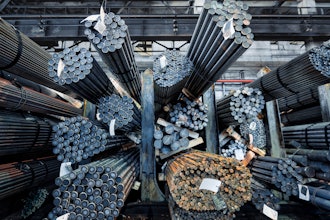DUBAI, United Arab Emirates (AP) — OPEC nations have agreed in theory that they need to reduce their production to help boost global oil prices during a meeting in Algeria, but a major disagreement between regional rivals Saudi Arabia and Iran still may derail any cut. What happened to oil prices and why can't OPEC agree to anything more binding?
OIL PROFITS DRY UP
Crude oil sold for over $100 a barrel in the summer of 2014 before bottoming out below $30 a barrel this January. That fall largely came from a boom in U.S. shale oil and countries like Saudi Arabia keeping their production high to hold onto market share. In the time since, a deal between Iran and world powers over its contested nuclear program allowed it more firmly back into the global oil market. The Islamic Republic wants to make up for lost time by boosting its own production.
TALKING UP OIL PRICES
The 14-member Organization of the Petroleum Exporting Countries, which had tremendous power in previous decades, has spent some two years trying to decide what to do. An April summit in Qatar that was widely expected to product an output cut fell apart. Meanwhile, financial markets have hung on every vague utterance suggesting a deal, sparking mini-rallies in crude prices that later fade. The same seemed to be happening after Wednesday's meeting, as U.S. crude futures surged and later fell back.
A DEAL TO MAKE A DEAL
Under the terms of Wednesday's deal, OPEC agreed to have a committee look at potentially cutting production to 32.5 million to 33 million barrels a day. That would be down from August's production of 33.2 million barrels a day. At the most, the possible deal would shave off 700,000 barrels a day — some 2 percent of overall production. The deal would need to be agreed to by OPEC members at their planned Vienna meeting in November.
PAIN FOR PRODUCERS, COMFORT TO CONSUMERS
Producers like Venezuela and Nigeria face tremendous economic pain as oil prices remain low. Even mega-producer Saudi Arabia has cut salaries for senior government officials while eating through its foreign reserves and cutting subsidies as it wages a costly war in Yemen. But consumers benefit. U.S. drivers pay an average of $2.20 a gallon (58 cents a liter) for regular gasoline, down from $3.69 a gallon (97 cents a liter) in June 2014 at crude's height.
PRODUCTION CAP OFFERS NO GUARANTEES
If ratified in November, an OPEC production cut wouldn't stop members from ignoring their quotas and pumping whatever they can. It's happened many times before. Meanwhile, any price rise in oil also could entice U.S. shale producers, whose break-even production costs are often higher than OPEC countries', back into the market. A generally weakened global economy could keep demand down as well.






















